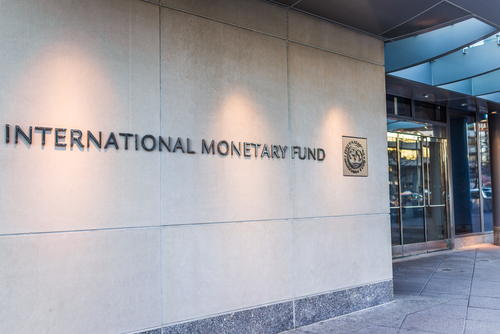“Georgia is thriving”, says the International Monetary Fund (IMF) in its latest article about Georgia, which speaks about the country’s recent economic development based on interviews with Georgia’s Economy Minister Dimitry Kumsishvili and National Bank of Georgia Governor Koba Gvenetadze. “Georgia, a country of 3.7 million people at the crossroads of western Asia and eastern Europe, is thriving. Its government program to refashion the country as an attractive investment destination has proved successful,” read the article.
The Georgian economy has performed well in the past years, posting a 4.7 percent growth rate for the first eight months of 2017. The credit rating agency Moody’s upgraded the country’s sovereign rating, and exports are booming. Furthermore, Kumsishvili added that the latest growth figure is much stronger than was estimated either by the IMF or the country’s government.
Tourism is booming, generating 28 percent more revenues than last year. Exports have grown by 28 percent, remittances transfers by 22 percent compared to last year. In the first two quarters, the private sector posted five percent growth in job creation”, said Kumsishvili. In his words to achieve such robust growth, the government worked out a four-pillar reform agenda combining the four strategic directions of economic reforms, open governance, infrastructure investment, and reforms in education.
The Economy Minister talked about the recent “growth-friendly tax reform” that the government of Georgia had implemented in order to improve the investment environment of the country. We noted that the private sector needs more equity, so we changed the corporate income tax model, taxing only distributed earnings. To make up for the loss in budget revenues, we increased indirect taxes, for example, by doubling taxes on fuel, raising the excise tax on tobacco, cars, and gambling. These revenues not only covered the gap created by corporate tax reform, but also created additional fiscal space for higher investments in infrastructure. In addition, we committed to freeze real current expenditures during the next four–five years, which means that savings from current expenditures will be transferred to investments,” said Kumsishvili.
On the other hand the National Bank of Georgia Governor Koba Gvenetadze talked about how Georgia’s banking system responded the economic slowdown in 2015–2016 that was accompanied by the depreciation of the Georgian lari and other currencies in the Caucasus and Central Asia region.
We responded with a flexible exchange rate, which proved to be a very good way to absorb the shock and to make the economy withstand the difficult times. As a result, the lari depreciated 34 percent against the dollar, but the economy continued to grow by 2.9 percent in 2015 and 2.8 percent in 2016. A cheaper lari stimulated economic activity by encouraging exports; incomes grew, which helped debt payers meet their financial obligations,” said Gvenetadze.
Then he talked about how Georgia dealt “more proactively” with high dollarisation [the ratio of foreign exchange deposits and loans to total deposits and loans] in Georgia. He said that together with the IFM experts Georgia’s economic team developed a 10-point program to reverse this dollarisation trend.
This long-term project already has some early results; for instance, loan dollarisation decreased by 9 percentage points, to 56 percent of total loans in 2017. The drop in household dollarisation was even larger, at 12 percentage points. Deposit dollarisation has also been declining,” Gvenetadze said. Gvenetadze added that the banking system was highly transparent and resilient in Georgia.




